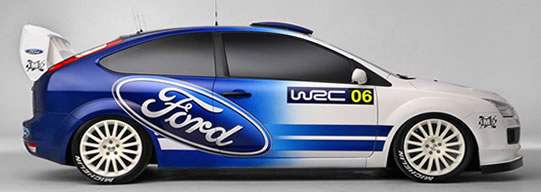
The first rallies in Cyprus were nothing like we see today. A cross between a race and a reliability trial, where the overriding problem was whether the cars would be capable of getting to the finish, is the best description. However, as the expertise of the drivers – and the reliability of the cars – improved, motor club members glamoured for another type of event and it became evident that something more professional was needed.
Therefore, in 1970 the Cyprus Automobile Association joined Rothmans of Pall Mall to run an annual international rally.
Initially they were rough, tough, long and ultimately destructive events, as the cars were routed over primitive (and sometimes non-existent) tracks; with unattainable average speeds and controls placed so as to extract the highest possible lateness penalties.
Despite its toughness, the Cyprus Rally earned itself a reputation for a blend of superb organisation, warm hospitality and genuine friendliness – features that still entice drivers, journalists and fans back year after year.
Hannu Mikkola was the star the first year but he failed to finish – engine failure forced him to retire his Ford Escort halfway through – and the winners were the three-man Anglo-Cypriot crew of Victor Zachariades, Loris Ellinas and Roger Fisher.
In 1971 local champion Christos Kirmitsis won in a Ford Escort TC, pushing Brian Culcheth and Johnstone Syer into second place. The British pair returned the following year, only to be pipped at the post again by a Cypriot: Lefteris Makrides in a Mercedes 250CE.
Stig Blomqvist and Arne Hertz brought their Saab 96 to the 3 rd Cyprus International Rally and won, annihilating all opposition.
The Turkish invasion and subsequent upheaval precluded any motorsport in 1974 and 1975 but the Cypriots were soon back in business and the 1976 rally drew entries from Spaniard Antonio Zanini, Ireland’s Billy Coleman and Shekhar and Yvonne Mehta, the winners.
The Mehtas returned in 1977 but success eluded them, the victors’ laurels going to local champion Kypros Kyprianou in a Hillman Avenger.
In 1978 the event was awarded coefficient 3 in the European Championship – and Britain ‘s Roger Clark won.
Ari Vatanen and Dave Richards were the winners of the 1979 event while second place was enough to secure the European Championship for Jochi Kleint of Germany .
1980 saw Roger Clark triumph again in a works prepared Ford Escort RS and become the first driver to win the event twice – a record that stood for fourteen years.
Vahan Terzian, who dominated motorsport in Cyprus for a decade, took the lead in the 1981 rally after Britain’s Malcolm Wilson retired his Ford Escort early in the event. Cypriots took the top three places; but the island was not to see another local winner for ten years.
Meanwhile the rally had been steadily climbing the European ladder and it achieved coefficient 4 in 1982, the year that Tony Fassina left with the winner’s trophy and the European Championship in the bag. Jimmy McRae and Ian Grindrod romped home in an Opel Manta 400 the following year.
John Buffum of the USA brought the Audi Quattro to Cyprus in 1984 and led from start to finish.
An unknown entity to the Cypriots before the start, Mauro Pregliasco was the dark horses of the Lancia team in 1985. However, with their uncanny knack of spotting the winner, the crowds were soon urging the Italian on to a flamboyant win.
After an epic battle with Cypriot Dimi Mavropoulos, Belgian Patrick Snijers, driving a Lancia 037, won the 14 th Cyprus Rally and secured second place in the European Championship.
Britons David Llewellin and Phil Short gave Audi its second victory in 1987, conquering the tough Cyprus stages in aA
Cypriots prevailed again in 1991 as Antonis Jeropoulos, in the Mitsubishi Gallant VR4, had a runaway victory over Mavropoulos.
The young Italian Alessandro Fiorio, driving the Astra Team’s Lancia Delta Integrale 16V, surged ahead in the first stage of the 20 th Cyprus Rally and stayed there – scoring his first coefficient 20 win. Mavropoulos came in second while Pole Marian Bublewicz’s third overall assured him second slot in the European Championship.
Fiorio returned in 1993 to equal Roger Clark’s record and to set a new one of two consecutive wins. He accomplished both objectives after a thrilling dogfight with Jeropoulos in the Mitsubishi VR4.Young Cypriot Zacharias Prastitis won F2 in his Honda Civic Si.
In 1994 the amiable young Italian came back for the third year running, intent on driving his Astra Team Lancia Delta into the record books with a hat trick of wins. He achieved his goal with a stupendous drive during which he set a further record by winning every special stage.
Vahan Terzian, in the Toyota Celica, was more than happy with second place and Group N. Dimi Mavropoulos rounded off the top three in the Ford Escort Cosworth while Prastitis picked up the F2 Cup again.
Lebanese driver “Bagheera”, driving an Astra Team Lancia Delta, made history at the 1995 event when he became the first Arab to win a major European Rally. Second was Cypriots Lenas Cleanthous, who also took Group N honors in his Mitsubishi Lancer EVO while first in F2 – and third overall – in the Opel Astra GSi, was enough to secure the European 2WD crown for Russian Evgeny Vassine.
In 1996 both the European Championship leader, Kurt Gottlicher of Austria , and Toyota Team Germany driver Armin Schwarz came to Cyprus intent on winning. Schwarz set the pace, pulling further and further ahead of Gottlicher and smashing each stage record as they went. He eventually cruised to victory and to the top of the European league table.
In Formula 2, Germans Nikolai Burkart consolidated his place at the top of the European leader board.
In 1997 the European title leader was here again. Krzysztof Holowczyc Poland knew from the start that a top three place would secure him the crown. So he stamped his mark on the rally from the very first stage, never faltering in the Subaru Impreza 555 and finishing over 14 minutes ahead of second placed Andreas Tsouloftas. Andreas Peratikos of Cyprus was third and Group N winner in his Mitsubishi Lancer Evo III.
Formula 2 honours went to local driver Savvas Andreou in his Seat Ibiza GTi.
In 1998 Andrea Navarra of Italy , driving a Subaru WRX1, raced to the top of the European Championship with a convincing win at the 26 th Cyprus Rally. Emil Triner of the Czech Republic took second place and F2 in the Skoda Octavia KC and Andreas Peratikos was again third overall and first in Group N in the Lancer.
In 1999 Monegasque Jean-Pierre Richelmi, driving a Subaru Impreza, scored his first coefficient 20 win. European Championship leader Enrico Bertone, who brought his Renault Megane KC to Cyprus to add to his points tally, was beaten into seventh place after being dogged by niggling mechanical problems throughout the 1050 kilometre route.
Pavel Sibera, driving the Czech National Team’s Skoda Octavia KC, achieved what he set out to do. He won F2 and beat Bertone.
Cyprus ‘ Andreas Peratikos made the hat trick, finishing third and first in Group N for the third consecutive year.
The Cyprus organisers were thrown in at the deep end in 2000, with just four months in which to put everything together, when the rally was taken into the WRC as a last-minute replacement for the China Rally.
Cyprus Rally 2000 was a level playing field for the WRC Teams as Armin Schwarz was the only driver to have competed on the island. A crushing all-the-way win gave Carlos Sainz his first victory in the Ford Focus and his 23 rd in the WRC. Team-mate Colin McRae came in second and François Delecour rounded off the top three for Peugeot.
The 2001 event moved from sweltering September to flaming June and Ford won again. This time Colin McRae took the honours. Richard Burns was runner-up for Subaru and Carlos Sainz was third in another Ford.
Marcus Gronholm won the 2002 Cyprus Rally, run in lashing April rainstorms, without winning a single stage! His Peugeot team-mate Burns was second and Tommi Makinen brought the Subaru home in third place.
In 2003 the rally was back to June and Subaru’s Petter Solberg scored his first win of the season that culminated in his taking the World Championship crown. Harri Rovanpera managed to hang on to second place in his Peugeot despite a last minute scare when a driveshaft broke in one of the final stages. Sébastien Loeb took third in the Citroen, leading all three double-chevrons to the finish.
World Champion Sébastien Loeb was declared winner of the 2004 Cyprus Rally in the Citroën Xsara, after Marcus Grönholm was disqualified because of a technical infringement on the Peugeot 307 WRC. Estonian Markko Märtin was second, retaining the Manufacturers’ Championship lead for Ford, and Carlos Sainz was third in the second Xsara.
In a year when Sébastien Loeb was steamrolling through the WRC, Cyprus would be no exception. The 2005 Cyprus Rally was dominated by the French driver in his Citroën Xsara, who became only the third driver in the event’s history to win it in two consecutive years. Austrian privateer Manfred Stohl took a career-best second overall in his OMV-backed Citroën Xsara. Only a few seconds behind, Markko Märtin and Henning Solberg fought it out until the end, with the Estonian and his Peugeot 307 finally getting to the podium for the second year in a row.
Every year the action and excitement of the race continue and are raised to a whole new level. The past rallies links can guide you through the drama, as it played out on “the most challenging gravel routes in the WRC”.
Source: www.cyprusrally.com.cy



